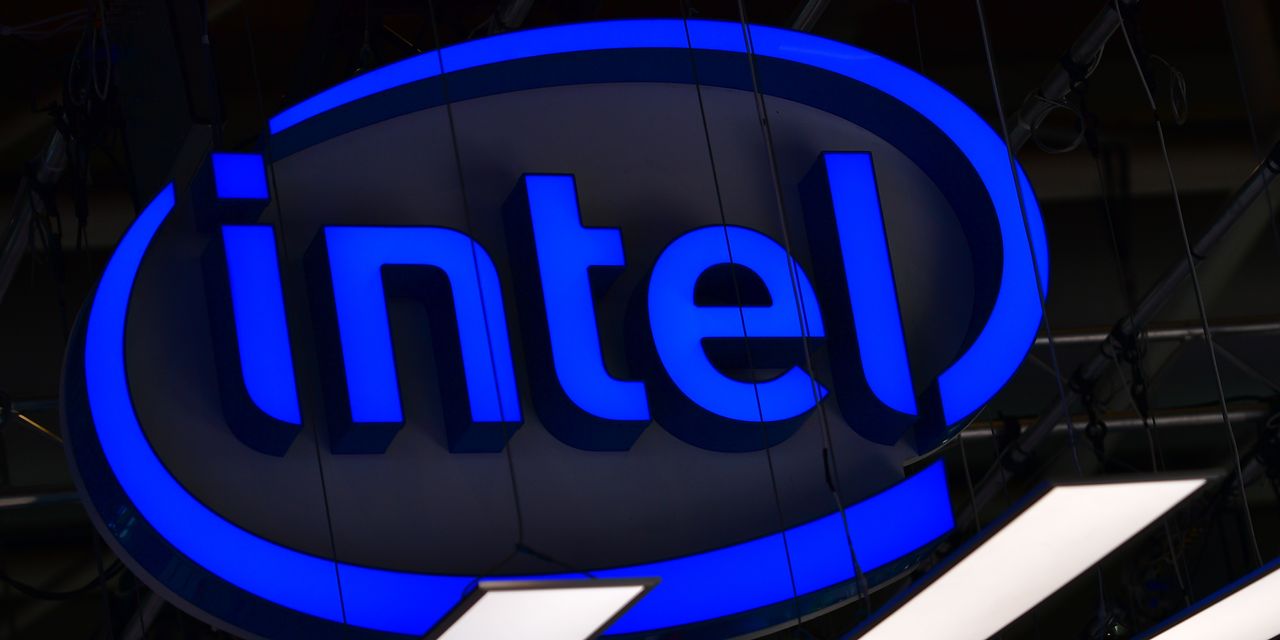
Intel Corp. shares paced declines in the semiconductor sector Tuesday and dragged on the Dow Jones Industrial Average after the chip maker laid out an ambitious plan to regain its leadership position in semiconductors by 2025.
Intel INTC, -2.32% shares fell 2.9% to $52.51 in recent activity as the PHLX Semiconductor Index SOX, -2.20% declined 2.7%, and the Dow Jones Industrial Average DJIA, -0.39% — which counts Intel as a component — dipped 0.5%.
Intel laid out its chip road map with the goal of regaining its leadership position in four years late Monday. Included in the announcement were an upending of Intel’s chip-naming convention based on a change in how it views performance architecture. Analysts appeared unimpressed with the change in nomenclature, writing Tuesday morning that the change shows Intel “giving up entirely” in “the node-marketing war,” and telling investors to be “skeptical.”
See also: Intel appears to be feeling the competitive heat from AMD
Since 1997, Intel has used the convention of classifying its chips using nanometers, or “nm,” to denote the size of each transistor that goes on a computer chip, the general rule being that smaller transistors are faster and more efficient in using power. Now, Intel is scrubbing that convention on the basis that a chip’s performance per watt is more accurate measure than just the density and size of its transistors.
From a marketing perspective, the “nm” designation has yielded diminishing returns for Intel, especially since last year, when the company delayed the release of its 7-nm chip to late 2022, while smaller rival Advanced Micro Devices Inc. AMD, -0.96% started selling a 7-nm chip in the summer of 2019. While Intel, for the most part, uses its own fabs to produce the wafers of silicon transistors used to make its chips, AMD orders its silicon wafers from third-party foundry giant Taiwan Semiconductor Manufacturing Co. TSM, -2.20%
Bernstein analyst Stacy Rasgon, who has an underperform rating on Intel and a $43 price target, said the new road map doesn’t “look terribly different from prior expectations.”
“As Intel has lost the node-marketing war, they are now giving up entirely, renaming their nodes to more closely match TSMC’s scheme,” Rasgon said in a note. “The forthcoming ‘enhanced’ 10nm Superfin (10++) is now called ‘Intel 7’; 7nm is now ‘Intel 4’; ‘7+’ is now ‘Intel 3’; with a new node (‘Intel 20A’) taking the place of what would have likely been called 5nm before.”
“While the plan seems sensible, it also suggests a product/process road map that remains behind the competition for years, with likely painful economic consequences in the meantime, and with the November analyst day as an outstanding bogey to get past,” Rasgon said.
For more: Intel stock drops as signs of continued AMD share gains eclipse earnings beat
Evercore ISI analyst C.J. Muse, who has an in-line rating and a $60 price target, also considered the road map “largely unchanged.”
“Add it up and Intel is doing and saying the right things, but executing to this road map is a multiyear process fraught with challenges,” Muse said. “We remain on the sidelines as we await better clarity here.”
Jefferies analyst Mark Lipacis, who has a hold rating and a $52 price target on the stock, said that Intel is a “show me” story following the announcement that it expects to regain leadership in 2025.
“Given its poor transistor execution over the past 5 years, which led to loss of transistor leadership in 2018, we think investors will be skeptical until INTC delivers on this plan,” Lipacis said.
Opinion: Intel wants to buy AMD’s old chip-making business? How weird are semiconductor mergers going to get?
Wells Fargo analyst Aaron Rakers, who has an equal rating on Intel and a $60 price target, said the announcement “should be viewed as net-positive for Intel” but that execution of the road map remained a “key debate.”
“While we expect some initial confusion around the new terminology, we see it as a necessary step,” Rakers said.
Last week, Intel’s quarterly results topped Wall Street expectations, but for the fifth time in a row, shares dropped 5% or more the day after the earnings report, following an outlook that barely cleared analyst expectations amid a global chip shortage.
Of the 41 analysts who cover Intel, 15 have buy ratings, 16 have hold ratings, and 10 have sell ratings along with an average target price of $62.30.










Add Comment